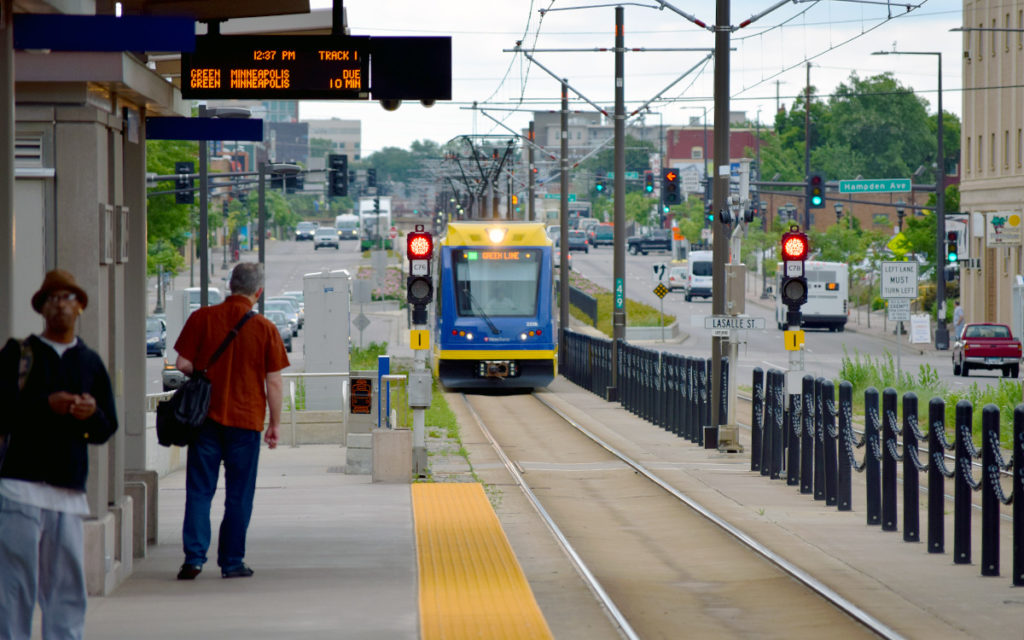Transportation Demand Management: Build Capacity or Change Behavior?
Across the country, cities struggling with crowded freeways and traffic jams are faced with the question: Should they build more capacity? Or should they look at new techniques to reduce that demand? Increasingly, the best and most cost-effective solution is to focus on changing people’s behavior. Cities can take an important step toward supporting behavior change by enacting a Transportation Demand Management (TDM) Ordinance that requires new developments create a plan for reducing car trips.
Saint Paul is one of a handful of cities in Minnesota that have approved TDM Ordinances – others include Minneapolis and Bloomington. While all ordinances are slightly different, the basic idea is to have new developments put together a suite of incentives for biking, walking, transit, and carpooling, and disincentives for driving alone. This can be as simple as a policy – like unbundling residential apartment rents from the cost of renting a parking space, all the way up to paying employees a small amount for commuting via more sustainable modes of transportation.
TDM Ordinances can apply only toward commercial developments, or only toward residential developments. In the case of Saint Paul, the TDM Ordinance applies to both. TDM Ordinances can be based on the size of the development, such as square footage or number of units or number of employees. In Saint Paul, the TDM Ordinance is actually based on the number of parking spaces a new development calls for. Over a certain threshold, 100 parking spaces, it is time for a TDM Plan. We can talk about whether or not that makes sense in another blog post!
At Move Minnesota, part of our work is to serve as a the official TDM Plan reviewer for the City of Saint Paul. Each TDM Plan has a number of key components:
- Goals: These can vary based on the development location. A typical goal might be to have a 10 percent of trips made by bike, or 20 percent of trips made by transit.
- TDM strategies: These are strategies for changing behavior—and they should always fit the goal. So if you have a goal to increase bicycling trips, offering indoor secure parking and showers might be a good TDM strategy. Or offering subsidized Metropasses might be a good TDM strategy to reach your goal for transit use.
- Evaluation strategies: All good plans include measurement. An evaluation strategy might be as simple as counting bikes at onsite bike parking once per month, counting the number of residents or employees with Metropasses, or conducting a commuter survey (we have done lots of these!).
- Budget: What would a plan be without some funds behind it? Having a budget in the plan helps a city measure commitment to the plan, in addition to evaluating its implementation.
For city staff, developers, and consultants at engineering and planning firms, we have created a sample plan and also a guidance document, with sample TDM strategies and evaluation strategies. While the guidance is tailored towards the City of Saint Paul’s TDM Ordinance, it generally is applicable to all TDM Plans. We hope you find it useful!
At the heart of it, a city that embraces biking, walking, and transit solutions is one that is cleaner, healthier, and many times, happier! TDM strategies and policy changes like these are important ways cities are working to make better use of existing infrastructure and improve the livability of our communities.

